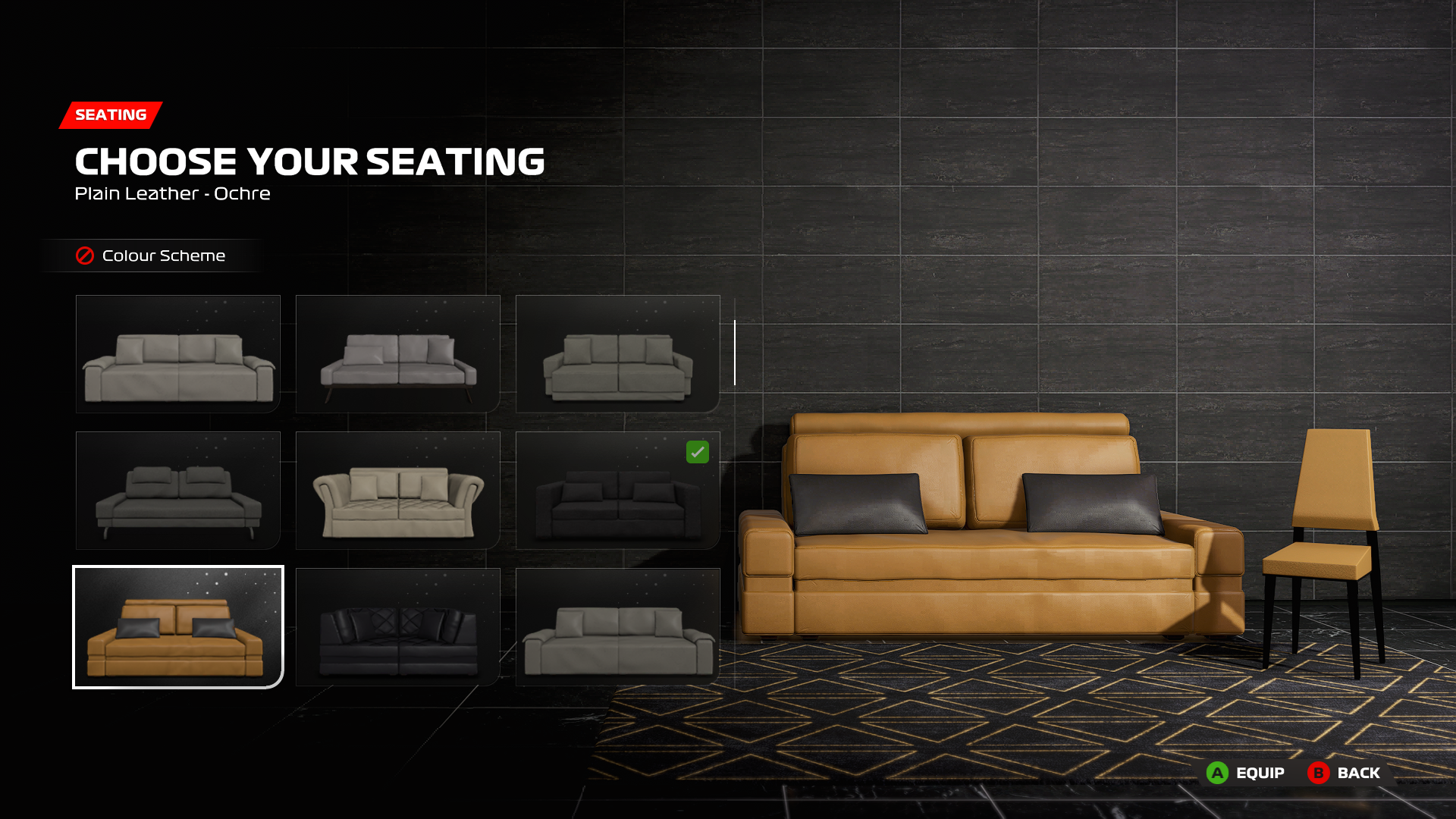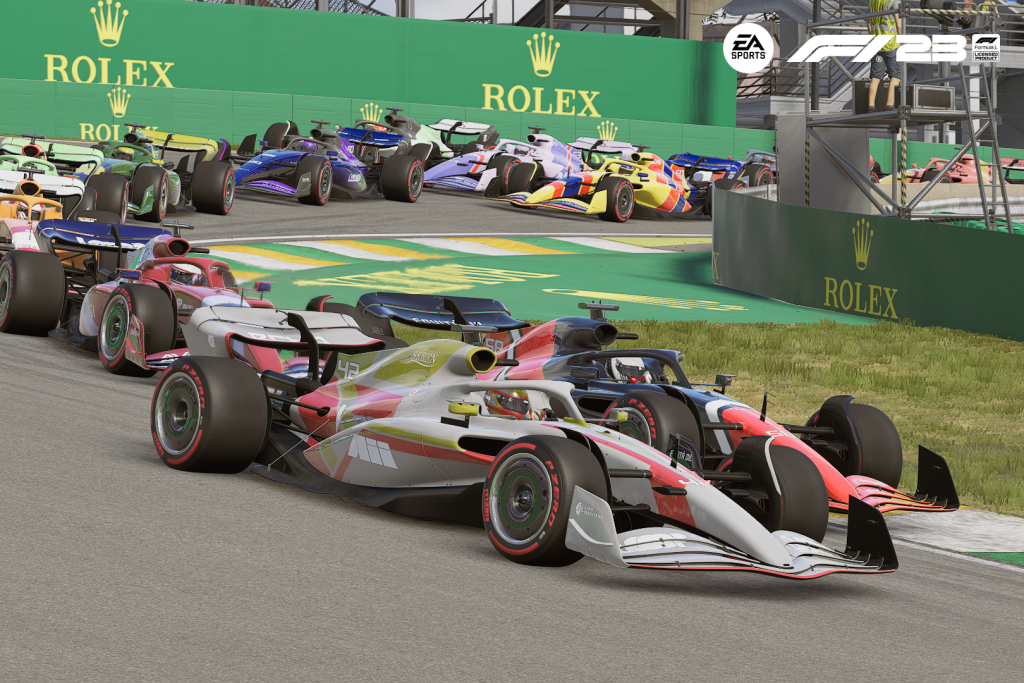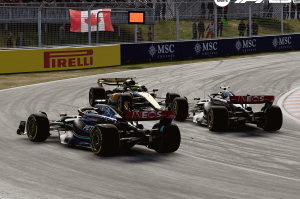Up Next

It didn’t take long once EA purchased Codemasters that people started speculating about an Ultimate Team-style mode, which is a staple of many of EA’s other licensed sports titles, being added into the F1 game series.
F1 23 is the first Formula 1 game to get this treatment, albeit under the guise of a mode named ‘F1 World’. The lack of the Ultimate Team moniker is presumably to minimise any negative reaction given how heavily criticised the various aspects of these modes are in EA’s other games.
That said, F1 World is also distinctly different to those Ultimate Team modes and it is worth clarifying that it isn’t exactly pay-to-win – at least not anywhere near in the same vein as the modes in FIFA, Madden NFL and NHL.
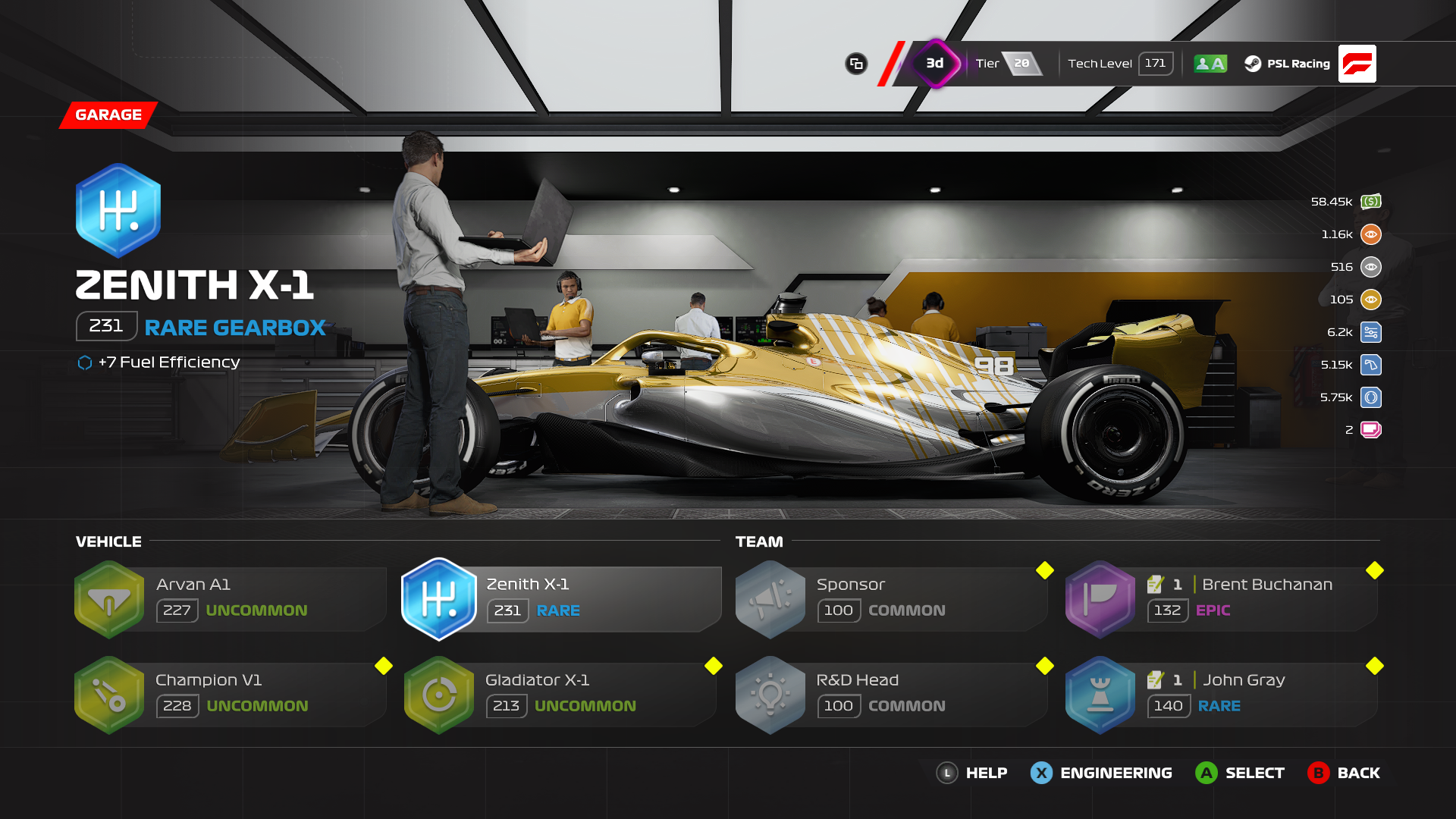
The four areas of your car you unlock upgrades for are the rear wing, power unit, brakes and gearbox. Alongside that are four team upgrades, which include the R&D head, strategist, principal and sponsor.
All eight contribute to your tech level and the higher your tech level the better your car and the more events you can enter.
Early one all of the people you get are fictional, but later rewards in the current podium pass include Franz Tost and Gunther Steiner as unlockable principals. Presumably that means more recognisable names from F1 will make their way into F1 World.
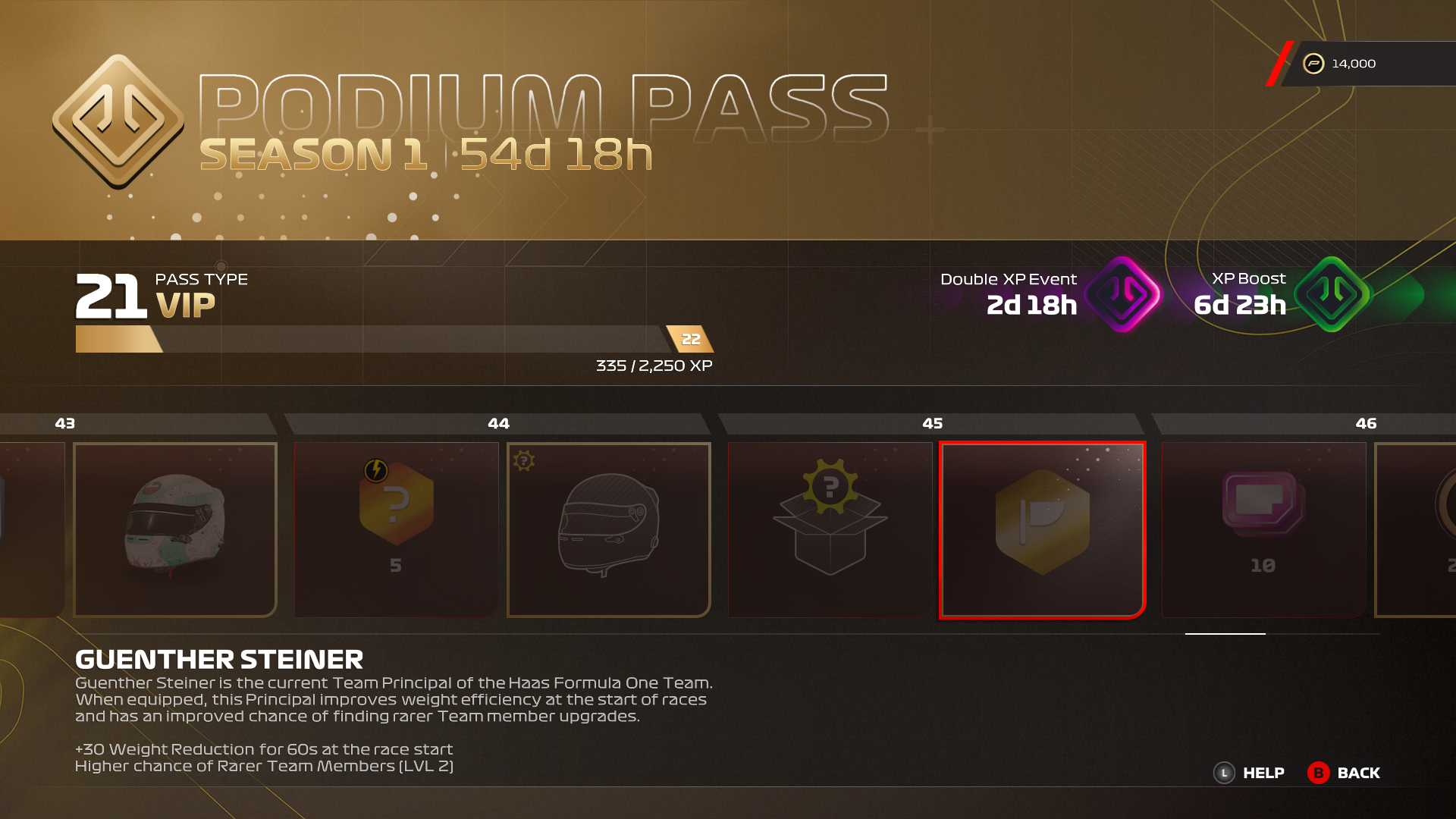
In a sense, it is simpler to build a team than in FIFA’s Ultimate Team as there’s no complicated chemistry system. Instead it’s a simple cycle of unlocking new upgrades, using them to enter new events and earning newer and better upgrades with an ever higher tech rating.
It is slightly more complicated than that though as each part also has a bonus attribute. So for the rear wing, it could be better DRS efficiency or more downforce and the amount it is boosted by depends on the rarity of the part.
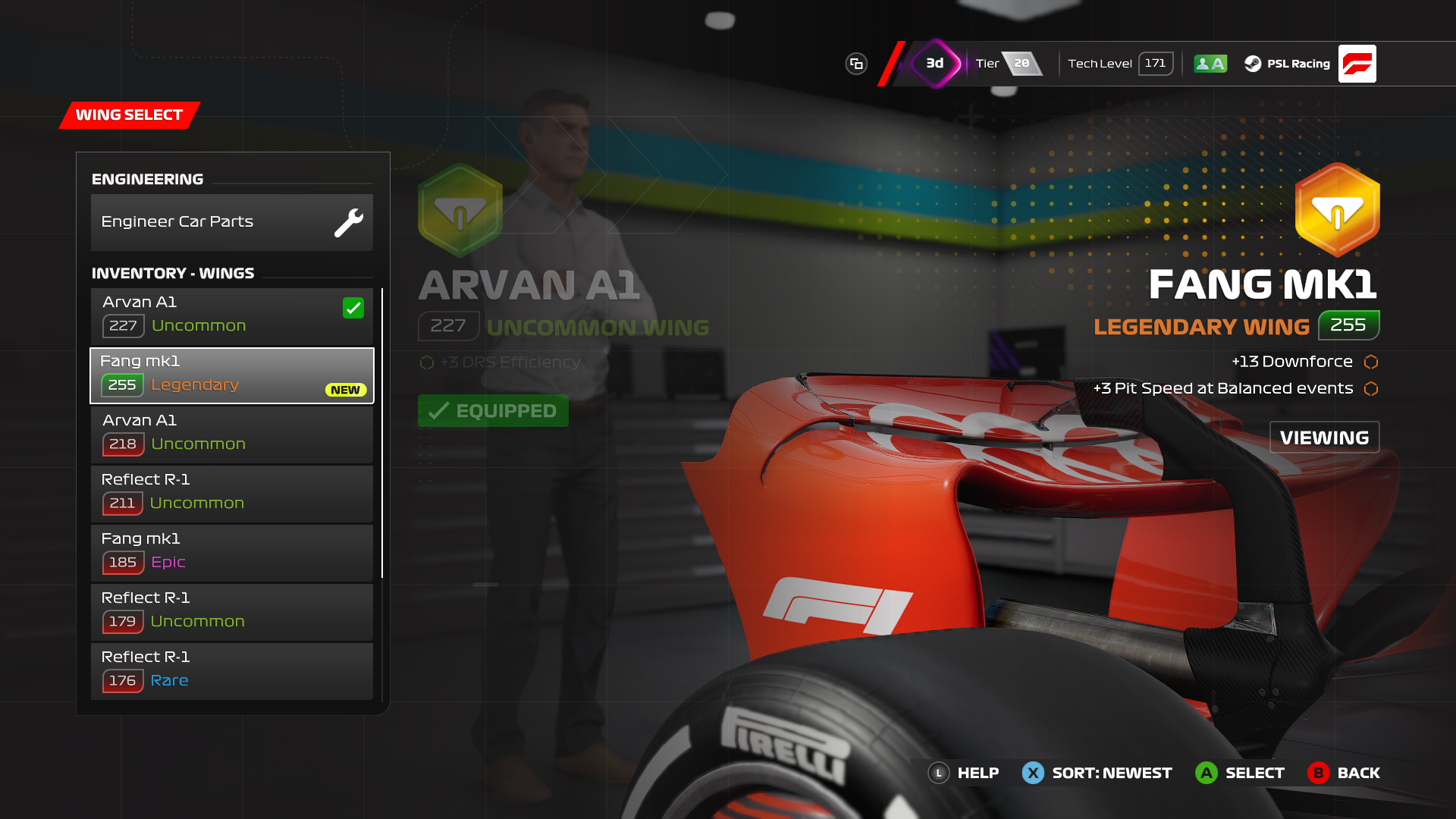
The same is true for the team upgrades, albeit those provide time-limited boosts that only activate if you meet certain criteria. For example you might get better tyre durability for 25 seconds in a race if you overtake a certain number of drivers, or get better aerodynamic efficiency for 60 seconds if you complete a clean lap.
Each of the team upgrades also need contracts to be used and they too have their own boosts and rarities. The need to have contracts available to keep using your best people is familiar to anyone who’s spent time on Ultimate Team.
It’s worth repeating though that none of these upgrades can be bought with real money, whereas the Ultimate Team modes in EA’s other sports games are infamous – albeit also massively lucrative – for their implementation of virtual trading card packs to acquire new players and bonuses for your team.
There are seven different forms of in-game currency including cash, three different levels of ‘insight’ and three different types of ‘data’. They can all be exchanged for one other if you have an excess of one resource but lack another.
Now, the plethora of customisation options to your character’s casual attire and racewear, apartment furnishings and a number of other visual unlockables can still be purchased with PitCoin – which itself can be bought with real money. So you can still buy virtual and function-less Beats headphones for over £3, just as you could in F1 22.
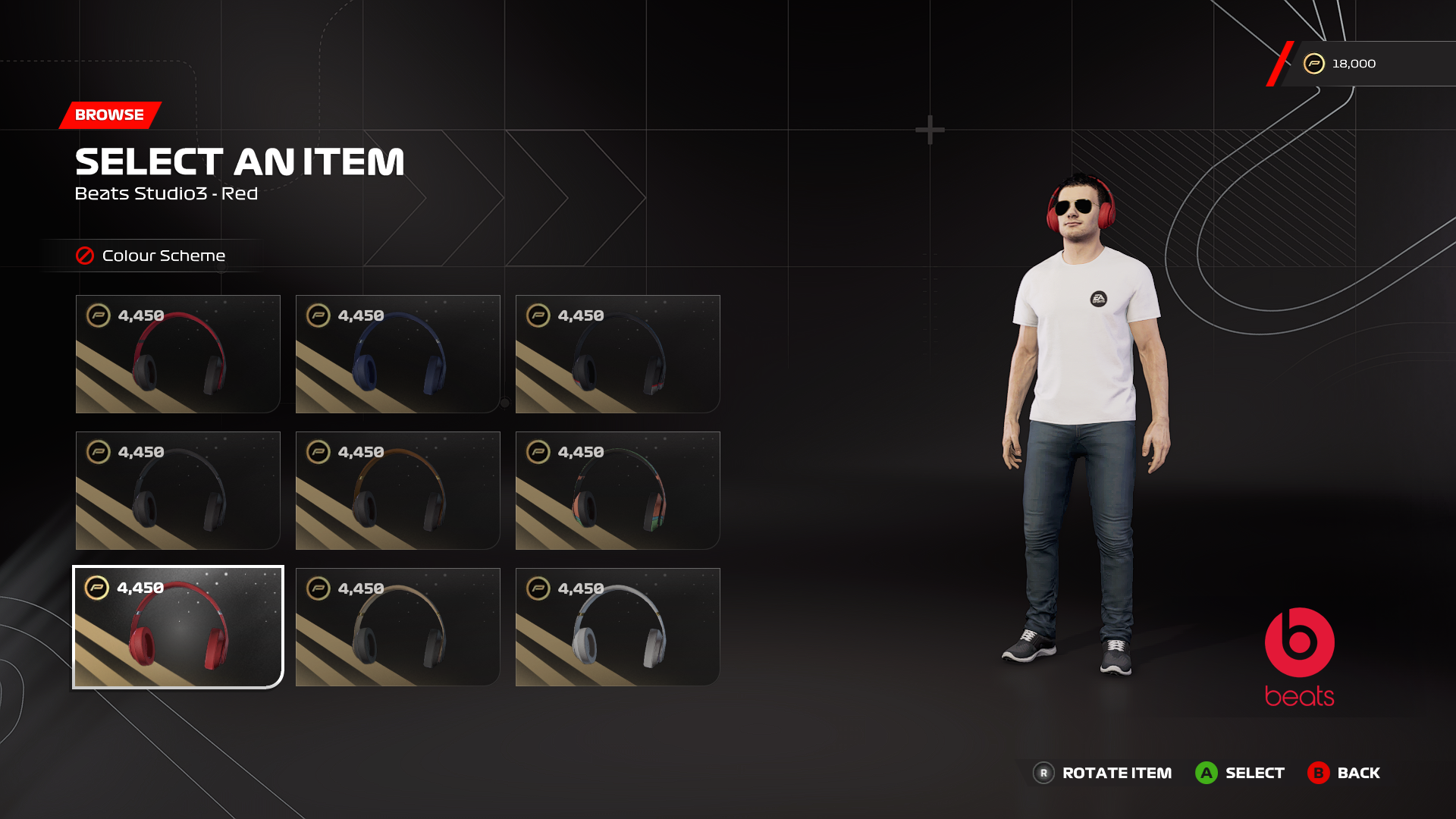
New for F1 23 is the ability to buy experience boosts to help you unlock rewards from the podium pass sooner.
That’s the closest the game gets to pay-to-win as while some of those unlockable items are cosmetics, there are car parts and team upgrades available in there as well as stickers for the Compendium.
The Compendium is a virtual sticker book, which partly explains the comparisons to Ultimate Team, which is essentially a virtual trading card game. Instead though the Compendium is purely a secondary goal, although one which you are encouraged to complete as you get rewards for each page of the book you fill up.
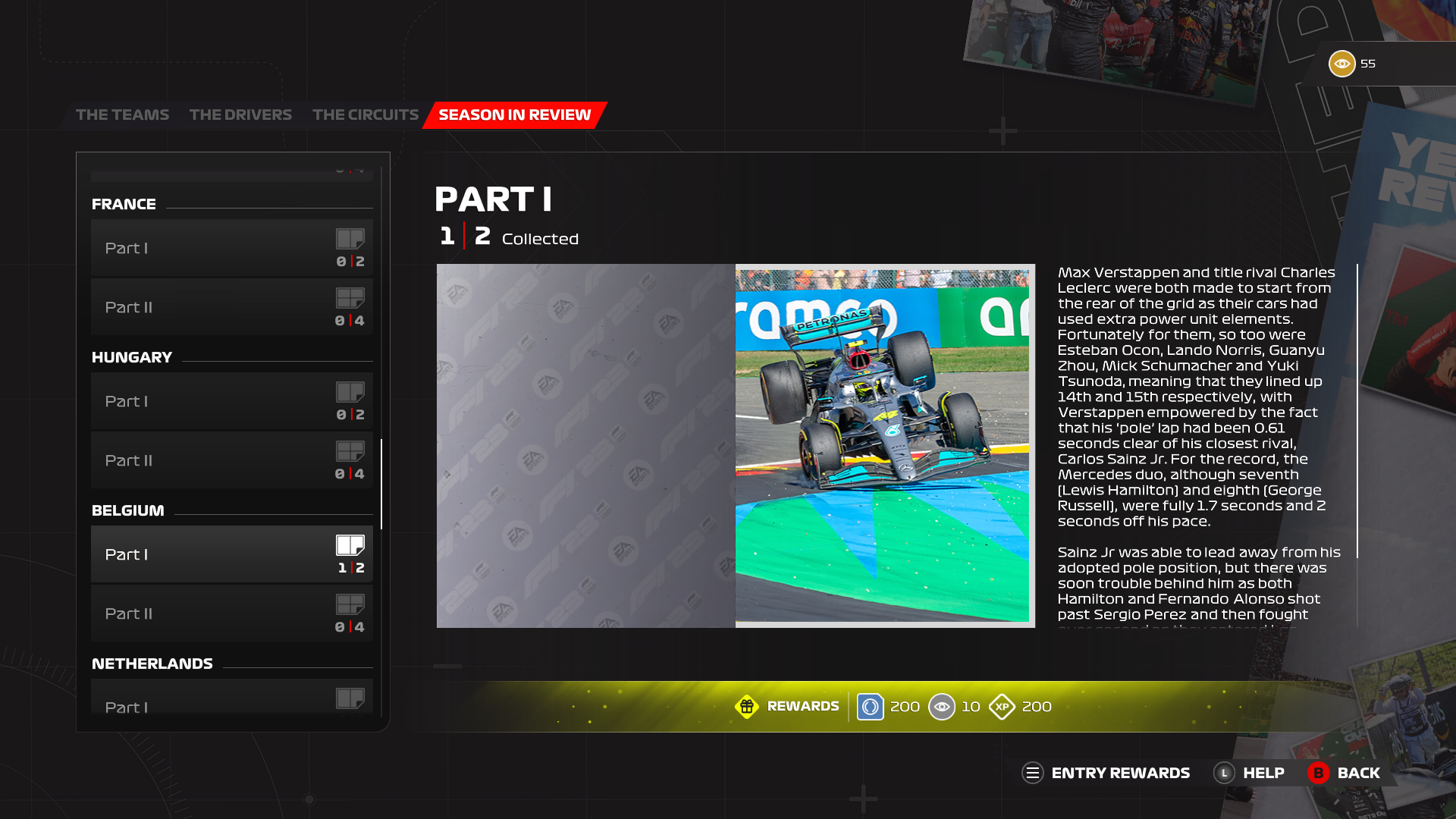
You can get duplicates of stickers which can be exchanged for one of the other resources, further adding to the complexities of F1 World as it means there’s actually eight different resources.
All of that though is just the excuse to go racing, and F1 World has its own list of both singleplayer and multiplayer events. That said though, many of them are very straightforward three- or five-lap races around a particular circuit.
In fact F1 World begins with three races that are more than easy enough to put off anyone who’s experienced with the F1 games and boring enough to potentially put off everyone else.
A three-lap race around the Red Bull Ring, which we won by a margin of 12 seconds over the second-placed driver, a three-lap race at Silverstone, this time with a 14-second gap over the runner-up, and a five-lap race at Yas Marina where we realised that track limit rules weren’t enabled. So you could skip the Turns 6 and 7 chicane consequence-free if you want an even more enormous buffer over everyone else.
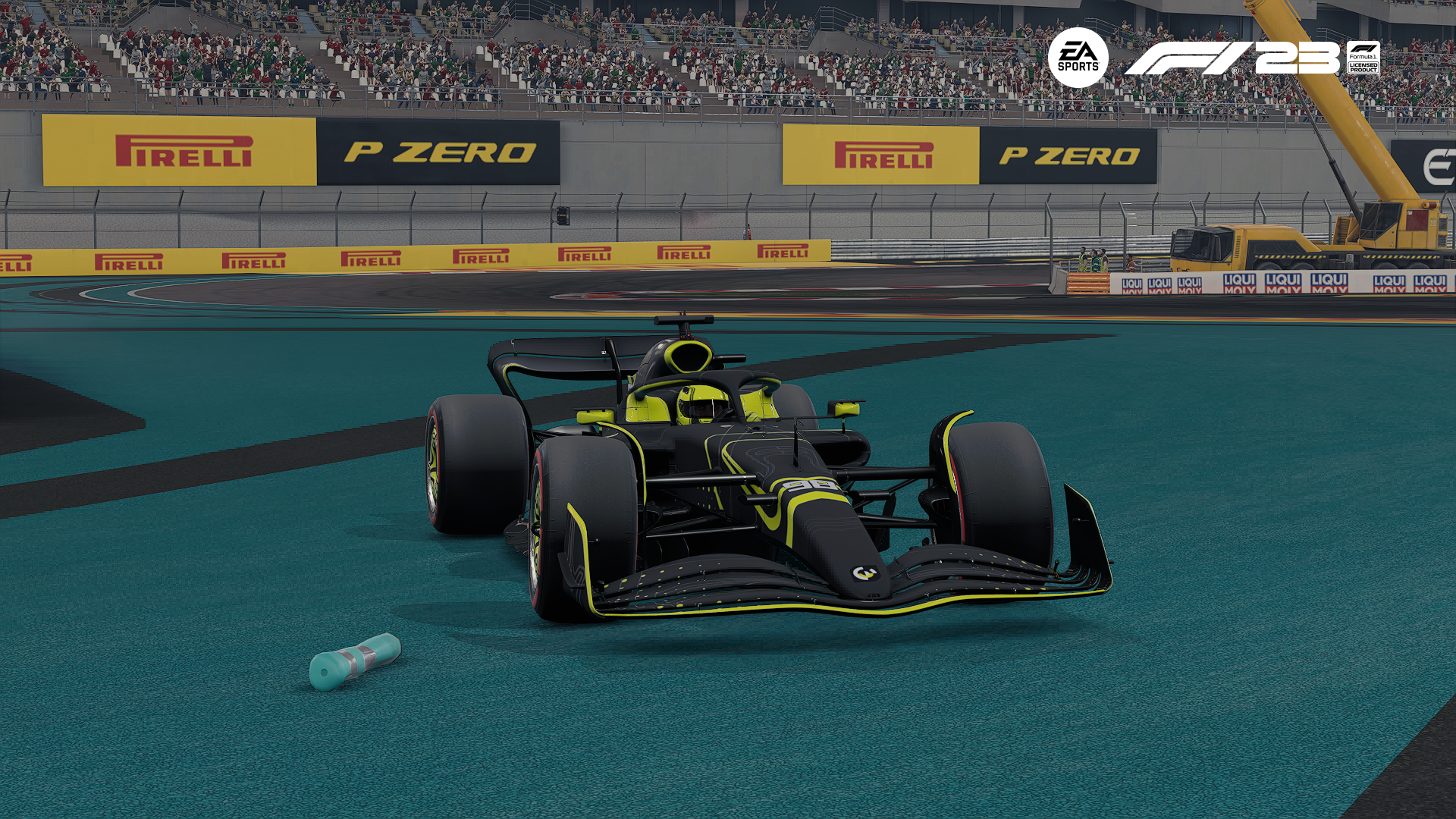
From there you’re free to pick and choose which events to do, provided you have a high enough licence level as your driving standards are tracked once the game starts enforcing track limits.
In reality though, F1 World is just a repackaging of previous challenges from F1 22. The average speed challenge at Australia in the wet with a Mercedes-AMG GT R Pro is a copy-and-paste from F1 22 and a lot of the other challenges, while new, are exactly the sort of ones which were in the dedicated ‘featured events’ section of last year’s game.

Even ones which are framed differently, such as the circuit mastery events, in reality are just five-lap races with the racing line assist forced on and then a five-lap race at the same circuit with the racing line turned off. After that point the race distance is increased with the racing line assist still turned off.
Similarly an ‘arcade race’ at Canada was another academically easy five-lap race except with the choice of one of the 10 real-life F1 cars.
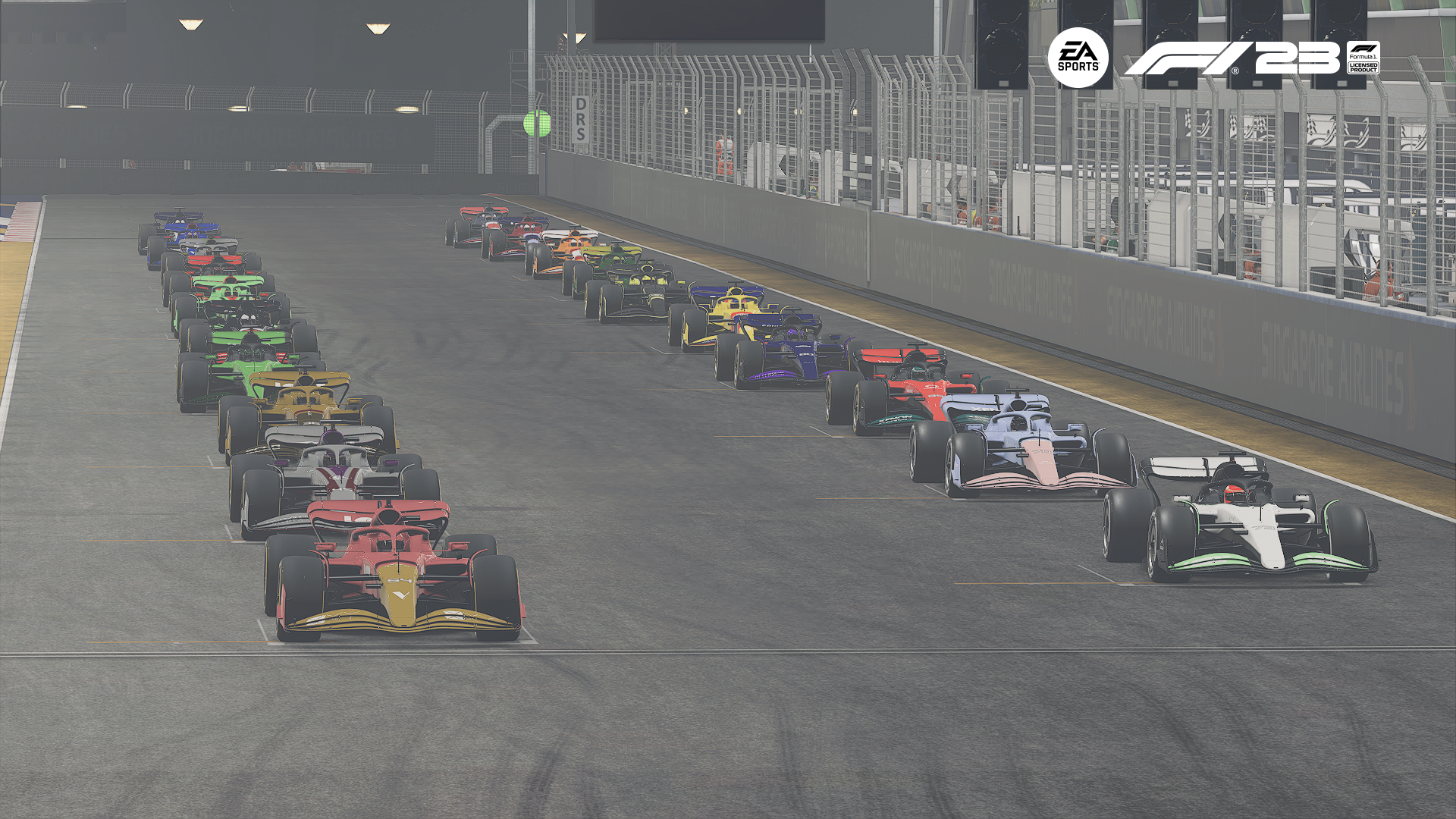
But since quite a few races either just base the difficulty on your car’s tech level, with no way to adjust how fast the opponents are, anyone who’s well-practised in the F1 games will find the events almost patronisingly easy. Even the time trial challenges, which use the real F1 cars from this season, set the target times at quite a low and easy-to-achieve level.
There are some challenges that ask you for an AI difficulty or tech level modifier for the AI cars and those are the ones which can pose an actual challenge if you’re not a newcomer to the F1 games.
New events will be added so there’s the possibility for more interesting formats to be introduced and the difficulty may well be adjusted as time goes on. But if EA and Codemasters have tailor-made F1 World to be an entry point for new players, then it’s likely that won’t be the case.
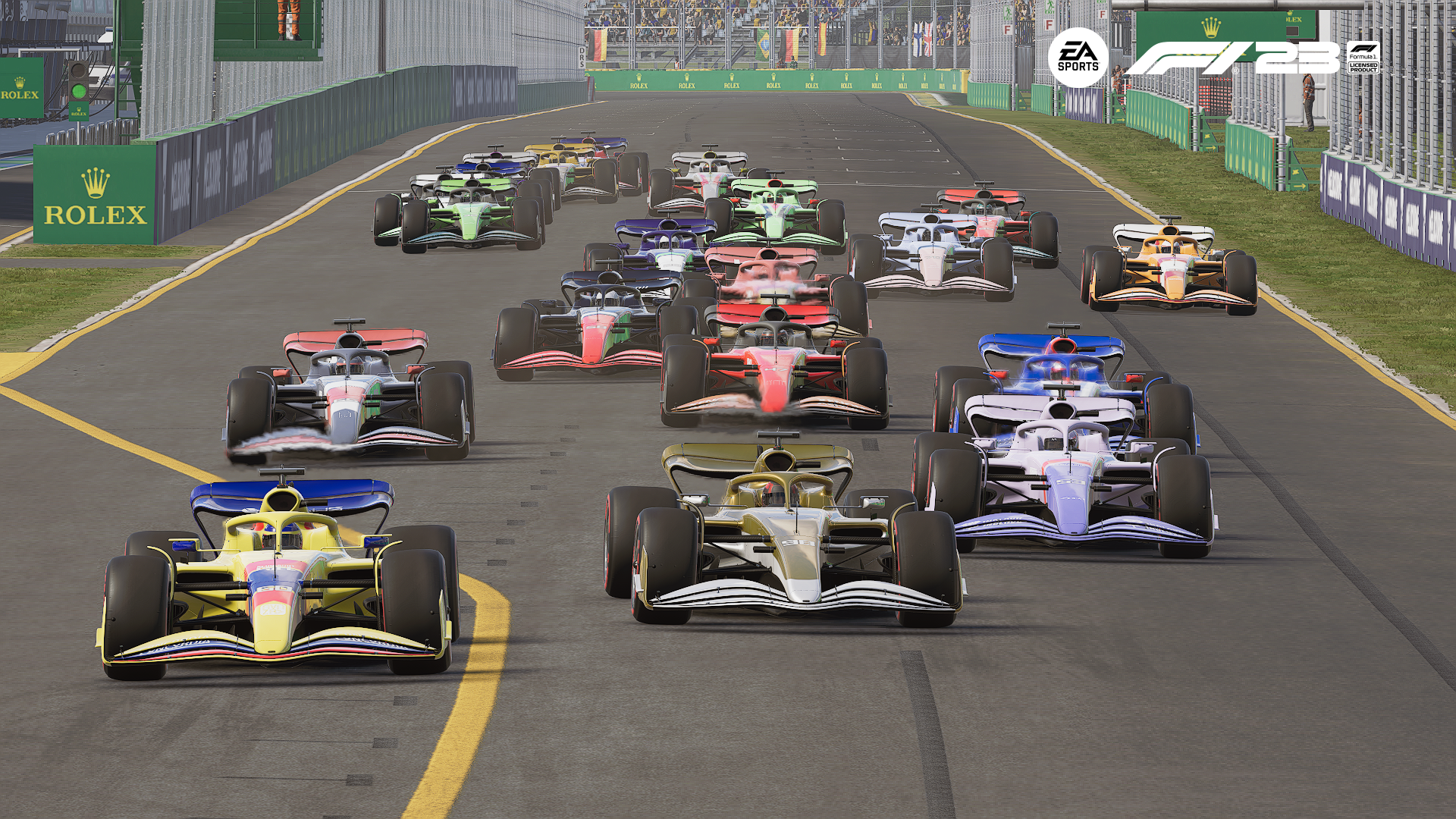
And if F1 World is indeed aimed at new players then there’s a lot of resource management to learn and keep on top of, a fact which could be off-putting to someone who just wants to race Formula 1 cars.
Equally it’s hard to imagine the hardcore end of the community ignoring career mode or ditching the traditional online modes, especially when the latter still has the option to have equal performance cars, which is what the online F1 gaming community and F1 Esports has been built on, in favour of F1 World.
While F1 World may not be as overtly monetised as the Ultimate Team modes in EA’s other sports titles, it also lacks the appeal and reason to invest any time into it.
